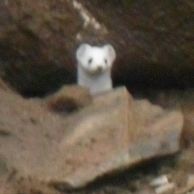The First Radiosonde
-
Recently Browsing 0 members
- No registered users viewing this page.
-
Our picks
-

Storm Chase Tour 1 2024 - Photos and Highlights
Paul H posted a post in a topic,
Highlights and photos from tour 1 of the WeatherHolidays USA storm chase - including bonus Northern Lights.
Picked By
Paul, -
-

Northern lights spectacular May 2024
Eagle Eye posted a post in a topic,
Amazing Aurora photos from last night.
Picked By
Paul, -
-

Major USA tornado outbreak possible
WeatherArc posted a post in a topic,
A major tornado outbreak is possible in Kansas and Oklahoma on Sunday 6th, May.
Picked By
Paul, -
-

How to quote a part (or all) of someone's post
Paul posted a guide in Posts and Posting,
While we trial the new 'reply-to' rather than quote button on the community, you may be wondering how to quote someone's post - click here to read a quick guide.-
- 0 replies

Picked By
Paul, -
-
-
Latest Weather News
UK Storm and Severe Convective Forecast
UK Severe Convective & Storm Forecast - Issued 2024-05-18 06:22:06 Valid: 18/05/2024 0600 - 19/05/2024 0600 THUNDERSTORM WATCH - SAT 18 MAY 2024 Click here for the full forecast
A mixed weekend but still some warm sunshine
Video outlook for the weekend weather across the UK. Warm sunshine, low cloud off the North Sea and a few showers interrupting the fine weather. Read the full update here
UK Storm and Severe Convective Forecast
UK Severe Convective & Storm Forecast - Issued 2024-05-17 07:54:27 Valid: 17/05/2024 0800 - 18/05/2024 0600 THUNDERSTORM WATCH - FRI 17TH MAY 2024 Click here for the full forecast












Recommended Posts
Create an account or sign in to comment
You need to be a member in order to leave a comment
Create an account
Sign up for a new account in our community. It's easy!
Register a new accountSign in
Already have an account? Sign in here.
Sign In Now